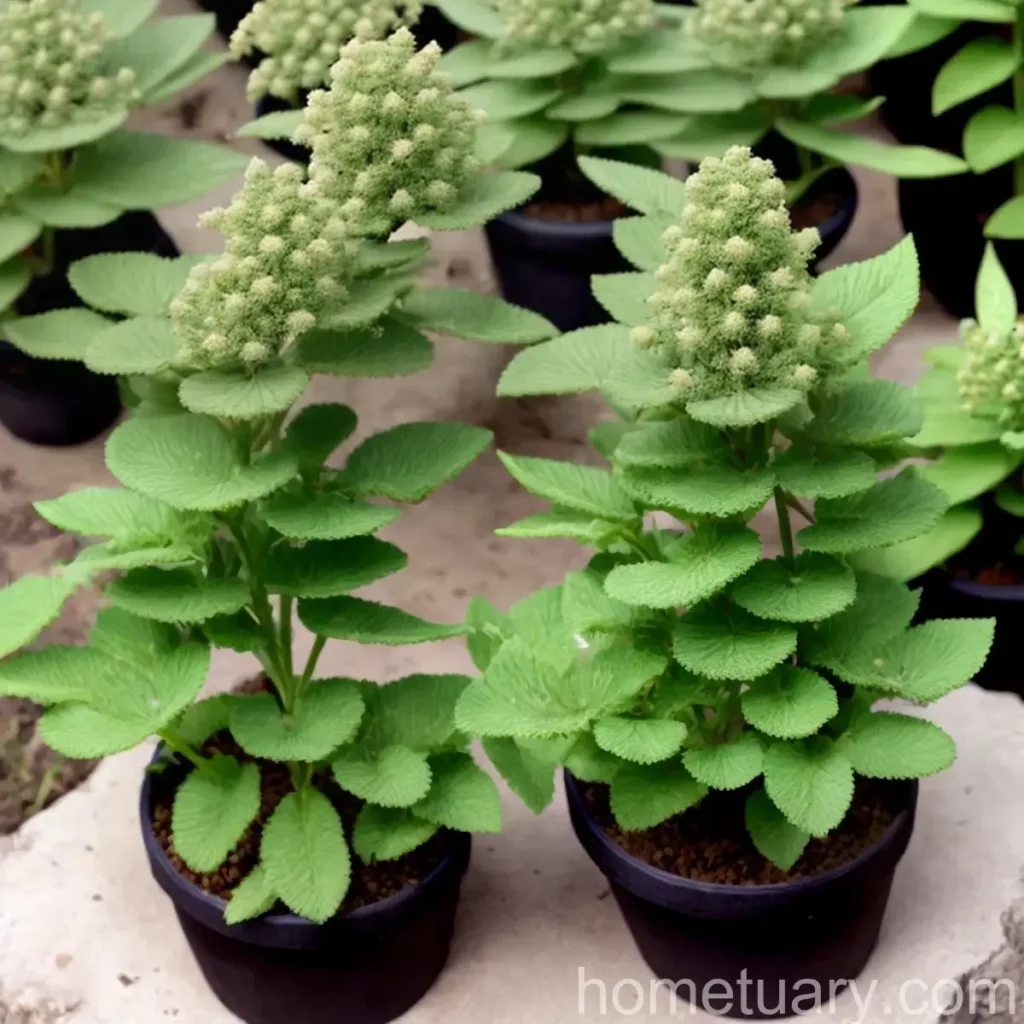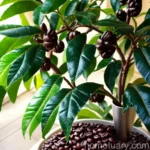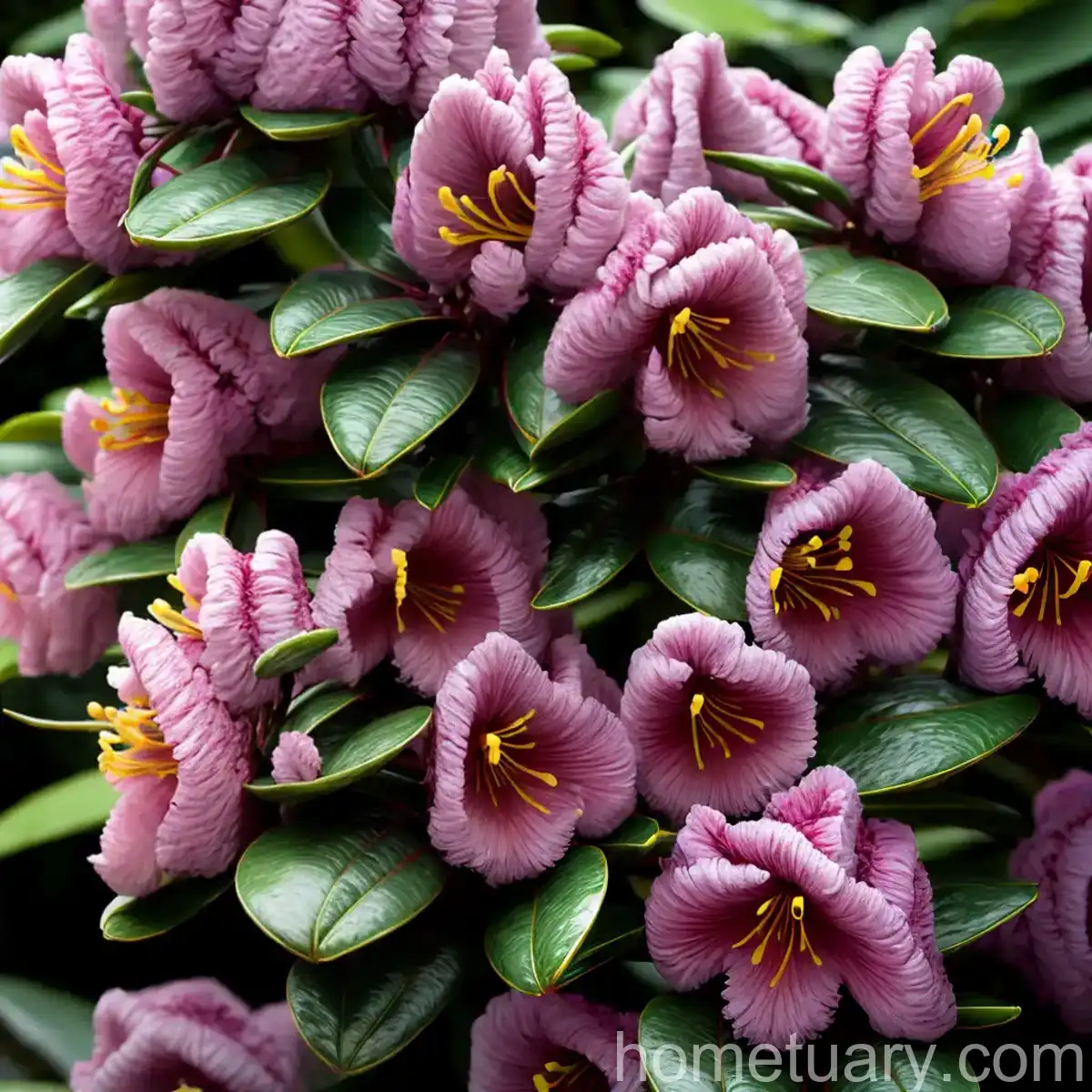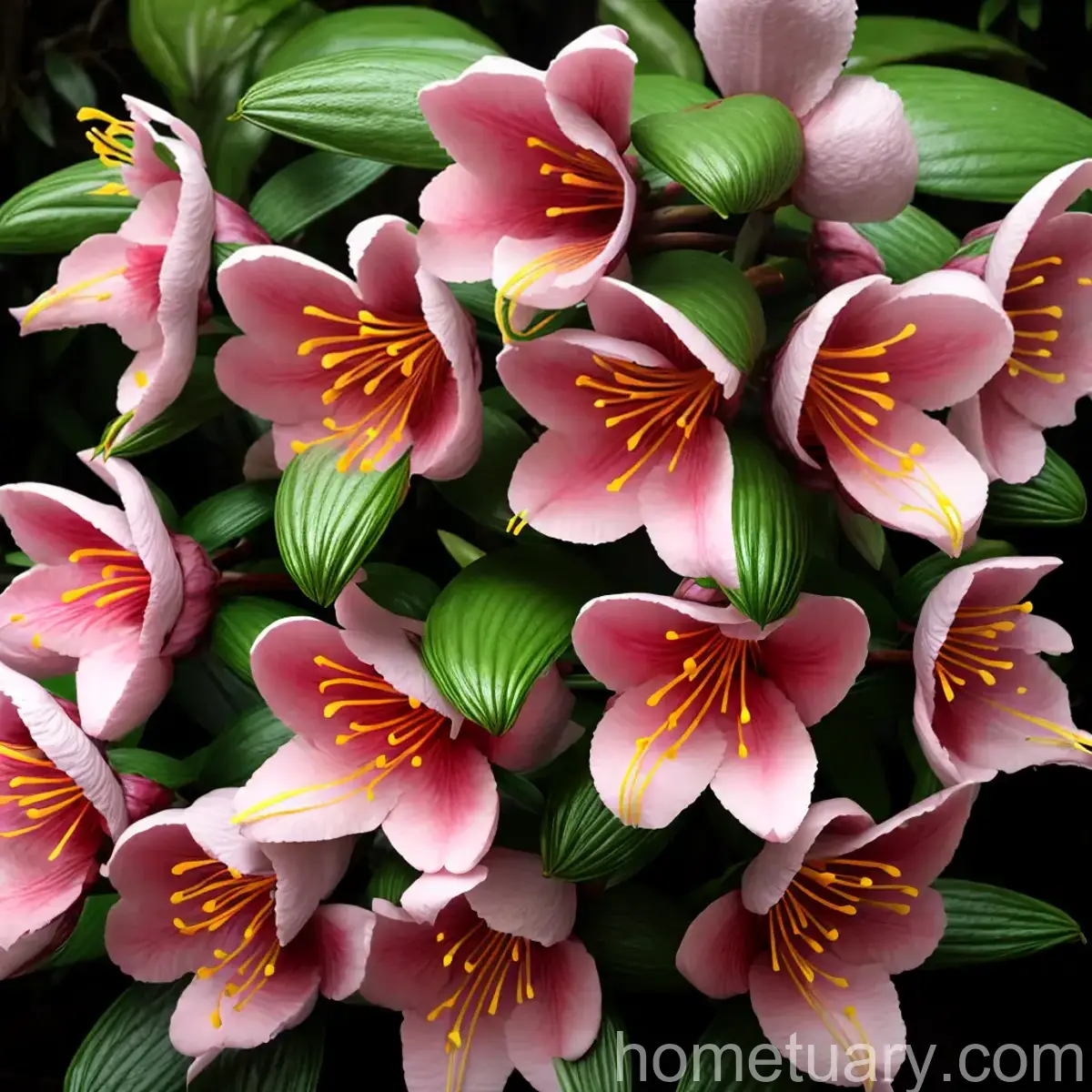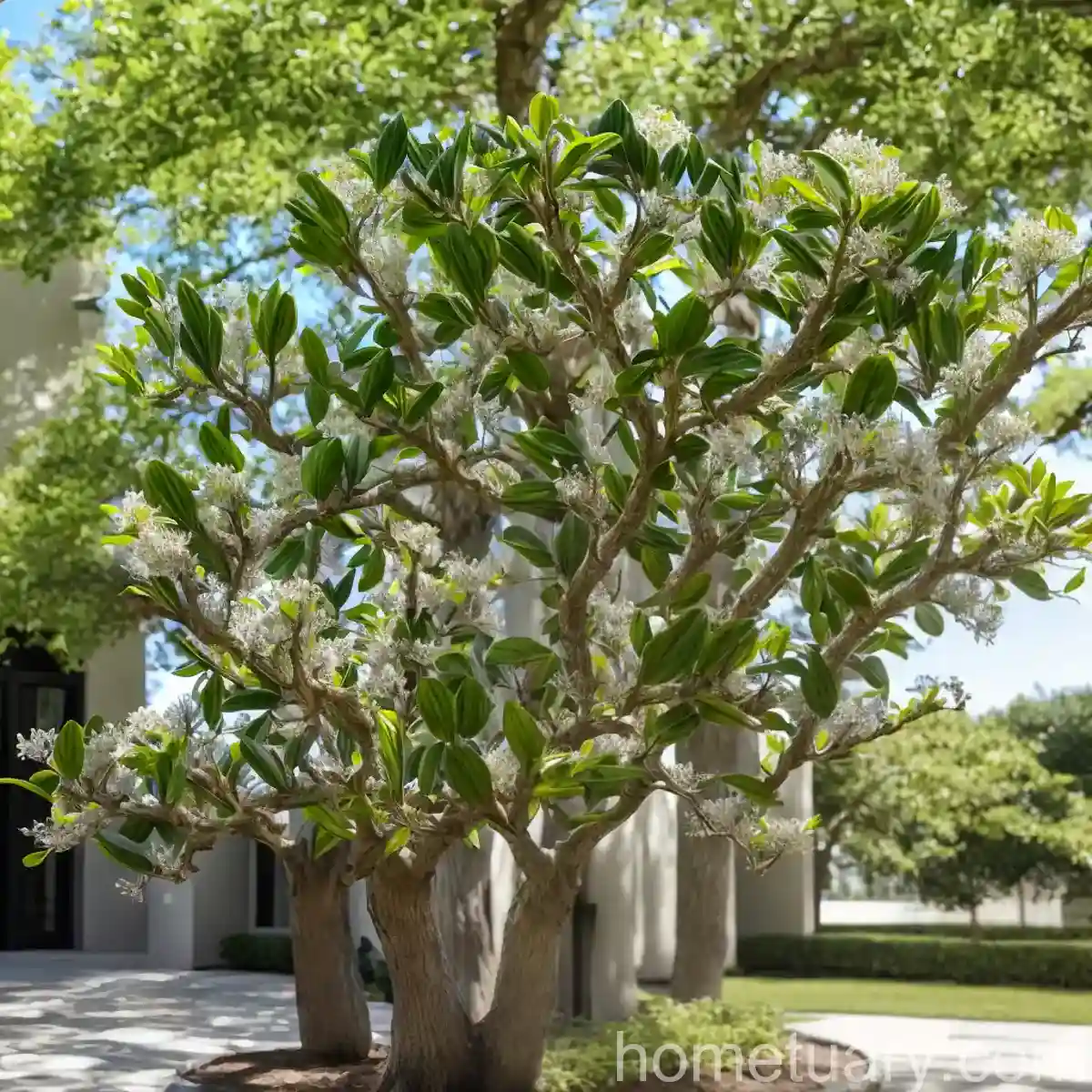The Wonderful World of Large-Styled Crosswort (Phuopsis stylosa)
Plants are a fundamental aspect of our natural world, and their diversity is truly astounding. From towering trees to delicate flowers, the plant kingdom encompasses an immense array of species, each with its own unique characteristics and requirements. In this article, we will dive into the captivating realm of large-styled crosswort (Phuopsis stylosa), exploring its features, growing tips, landscape uses, and much more. Whether you are a seasoned gardener, a plant enthusiast, or are simply curious about the flora that surrounds us, join me in unraveling the mysteries of this remarkable botanical treasure.
What is Large-Styled Crosswort (Phuopsis stylosa)?
Large-styled crosswort, scientifically known as Phuopsis stylosa, is a charming perennial plant that belongs to the Rubiaceae family. This delightful species is native to the Caucasus region, where it thrives in diverse habitats, ranging from woodland edges to rocky slopes. With its lush foliage and delicate flowers, large-styled crosswort adds a touch of elegance to any garden or landscape setting.
Phuopsis stylosa Characteristics
Before we delve into the specific aspects of large-styled crosswort, let’s take a moment to appreciate some of its defining characteristics:
- Scientific Name: Phuopsis stylosa
- Common Name: Large-styled Crosswort
- Family: Rubiaceae
- Native Range: Caucasus region
- Habitat: Woodland edges, rocky slopes
- Growth: Perennial
- Flowering Season: Late spring to early summer
- Foliage: Lush green, lance-shaped leaves
- Flowers: Small, star-shaped blooms in shades of pink
- Growth Habit: Spreading, low-growing
- Wildlife Attractant: Attracts pollinators such as bees and butterflies
Now that we have a glimpse of what large-styled crosswort entails, let’s explore its various aspects, from growing tips to medicinal properties and everything in between.
Key Takeaways
Culture
Large-styled crosswort, with its enchanting appearance and versatile nature, offers a multitude of cultivation opportunities. Whether as a groundcover or a charming addition to rock gardens, this plant captivates with its cultural adaptability.
Uses
From ornamental landscaping to potential medicinal applications, large-styled crosswort presents a range of uses that extend beyond its aesthetic appeal. Understanding its uses can provide valuable insights into maximizing its potential.
Water
Water is a vital element for plants, and large-styled crosswort is no exception. Exploring its water needs and conservation tips can empower gardeners and botanical enthusiasts to nurture this beautiful species sustainably.
Sunlight
Sunlight serves as a source of energy for plant growth and development. In the case of large-styled crosswort, understanding its sunlight requirements is crucial for ensuring healthy and thriving vegetation.
Fertilizer
The role of fertilizers in promoting plant health and vigor cannot be overstated. By examining the fertilizer needs of large-styled crosswort, we can unlock the secrets to fostering robust growth and abundant blooms.
Soil
The foundation of a thriving garden often lies in the soil. Large-styled crosswort has specific soil preferences, and gaining insight into these requirements is essential for cultivating this plant successfully.
Pruning
Pruning is a horticultural practice that influences the form and vitality of plants. Learning about the pruning techniques tailored to large-styled crosswort can aid in maintaining its aesthetic appeal and overall well-being.
Propagation
Reproducing plants through propagation opens up opportunities for expanding their presence in gardens and landscapes. An exploration of the propagation methods suitable for large-styled crosswort offers valuable insights into multiplying this captivating species.
Container Popularity
Container gardening has become increasingly popular, offering practical and aesthetic benefits. Considering large-styled crosswort as a container plant can infuse small spaces with its natural charm.
Common Diseases
Just like any living organism, plants are susceptible to diseases. Large-styled crosswort, while generally resilient, may face specific ailments that warrant attention and proper management.
Disease Diagnosis
Recognizing the signs and symptoms of plant diseases enables prompt intervention and mitigation. Understanding the indicators of common diseases in large-styled crosswort is essential for preserving its health and vigor.
Common Pests
Pests can pose significant challenges to plant growth and vitality. Identifying the common pests that may afflict large-styled crosswort is paramount for implementing effective control measures.
Botanist’s Tips
Insights from botanists and plant scientists can offer valuable guidance for cultivating and appreciating large-styled crosswort. Their expertise can shed light on various aspects of this species, from its ecological significance to its horticultural potential.
Large-Styled Crosswort (Phuopsis stylosa) in Detail
In the following sections, we will delve into the specific aspects of large-styled crosswort, ranging from its habitat and planting guide to its medicinal properties and wildlife interactions.
Phuopsis Stylosa Growing Tips
Cultivating large-styled crosswort successfully begins with understanding its growth requirements. The following tips can serve as a guide for nurturing this captivating plant:
- Soil: Well-drained, nutrient-rich soil
- Sunlight: Partial shade to full sun
- Water: Moderate, regular watering
- Fertilization: Light fertilization in early spring
- Pruning: Trim back after flowering to maintain compactness
- Propagation: Divide plants in spring or early fall
Large-Styled Crosswort Care
Caring for large-styled crosswort involves a combination of attentive practices tailored to its specific needs. Consider the following aspects for providing optimal care:
- Watering: Maintain consistent soil moisture to support healthy growth
- Weeding: Keep the area around the plants free from competing weeds
- Mulching: Apply a layer of organic mulch to conserve moisture and deter weeds
- Fertilizing: Use a balanced, slow-release fertilizer to fortify the soil
- Pruning: Regularly trim back excessive growth to maintain the desired form
- Pest Control: Monitor for pests and intervene promptly if detected
- Disease Management: Keep an eye out for signs of diseases and take appropriate measures if necessary
Phuopsis Stylosa Habitat
In its native range of the Caucasus region, large-styled crosswort thrives in diverse habitats. Woodland edges and rocky slopes provide the ideal conditions for this species to flourish, offering insights into its ecological niche and adaptations.
Large-Styled Crosswort Planting Guide
When introducing large-styled crosswort to a garden or landscape setting, understanding the planting process is essential for ensuring successful establishment and long-term vitality. Consider the following steps for planting large-styled crosswort:
Planting Steps:
- Site Selection: Choose a location with the appropriate light and soil conditions
- Soil Preparation: Ensure the soil is well-drained and supplemented with organic matter if needed
- Planting Holes: Dig holes at appropriate intervals to accommodate the root balls of the plants
- Planting Depth: Set the plants at the same level at which they were previously growing
- Watering: Water the newly planted specimens thoroughly to promote root establishment
- Mulching: Apply a layer of mulch around the plants to conserve moisture and suppress weeds
- Maintenance: Monitor the plants for any signs of stress and provide ongoing care as needed
Phuopsis Stylosa Propagation Methods
Multiplying large-styled crosswort through propagation techniques opens up possibilities for expanding its presence in gardens and landscapes. Consider the following methods for propagating large-styled crosswort:
Propagation Techniques:
- Division: Divide established clumps in spring or early fall, ensuring that each division has sufficient roots and shoots
- Cuttings: Take stem cuttings in spring or early summer, root them in a suitable growing medium, and transplant the rooted cuttings once they have developed a robust root system
Large-Styled Crosswort Landscape Uses
Large-styled crosswort holds considerable potential for enhancing landscape aesthetics and ecological functions. Exploring its landscape uses offers insights into its versatility and contributions to outdoor environments.
Landscape Applications:
- Groundcover: Use large-styled crosswort as a low-growing groundcover to fill in open spaces and suppress weeds
- Rock Gardens: Incorporate this plant into rock gardens for a touch of color and texture among the rocky elements
- Border Planting: Line garden borders or pathways with large-styled crosswort for a soft, natural edge
- Mixed Plantings: Pair large-styled crosswort with complementary plants to create visually appealing combinations
- Wildlife Gardens: Include this plant in wildlife-friendly gardens to attract pollinators and other beneficial insects
Phuopsis Stylosa Medicinal Properties
In addition to its ornamental value, large-styled crosswort may possess certain medicinal properties. While further research is needed to substantiate its medicinal uses, historical and anecdotal evidence may shed light on its potential benefits.
Large-Styled Crosswort Benefits
Understanding the benefits of large-styled crosswort can provide a holistic perspective on its value beyond its visual allure. From ecological contributions to potential therapeutic qualities, this plant offers a range of benefits worth exploring.
Potential Benefits:
- Erosion Control: Large-styled crosswort’s spreading nature can help stabilize soil and prevent erosion in suitable growing conditions
- Wildlife Support: The flowers of large-styled crosswort attract pollinators, contributing to overall ecosystem health
- Aesthetic Enhancement: Its lush foliage and delicate flowers add beauty to garden settings
- Therapeutic Potential: While further research is needed, large-styled crosswort may possess medicinal qualities with potential health benefits
Phuopsis Stylosa Flowering Season
Large-styled crosswort graces the garden with its charming blooms during a specific flowering season. Understanding its flowering period provides an opportunity to anticipate and appreciate its floral display.
Flowering Period: Late spring to early summer
Large-Styled Crosswort Native Range
The native range of large-styled crosswort provides insights into its ecological adaptations and geographic distribution. Exploring its native habitats can offer valuable context for understanding its cultural and ecological significance.
Native Range: Caucasus region
Phuopsis Stylosa Wildlife Attractant
Plants play a vital role in supporting wildlife, and large-styled crosswort is no exception. Its flowers serve as a nectar source for pollinators, contributing to the biodiversity and ecological balance of its surroundings.
Large-Styled Crosswort Garden Design
In garden design, large-styled crosswort can serve as a versatile and visually appealing element. By incorporating this plant into garden compositions, a range of design possibilities can be realized.
Design Ideas:
- Texture Contrast: Use large-styled crosswort to create textural contrast with other plants in the garden
- Color Complement: Pair its pink blooms and lush green foliage with complementary plant colors for visual harmony
- Focal Point: Utilize large-styled crosswort as a focal point in specific garden areas to draw attention and create interest
- Seasonal Interest: Combine this plant with others that offer seasonal interest to create dynamic garden compositions
Phuopsis Stylosa Drought Tolerance
The ability of plants to withstand dry conditions is a valuable trait, particularly in regions prone to drought. Understanding the drought tolerance of large-styled crosswort informs its suitability for various environmental settings.
Large-Styled Crosswort Soil Requirements
For plants to thrive, the soil must provide essential nutrients and a suitable structure for root growth. By exploring the soil requirements of large-styled crosswort, we can optimize its cultivation conditions.
Soil Preferences:
- Well-Drained: Ensure the soil offers good drainage to prevent waterlogging
- Rich in Organic Matter: Incorporate organic amendments to enhance soil fertility
- Neutral to Slightly Acidic pH: Aim for a soil pH in the range of 6.0 to 7.0 for optimal growth
Phuopsis Stylosa Sun Exposure
Sun exposure influences plant growth and flowering, making it a pivotal factor in determining suitable growing locations. Understanding the sun exposure preferences of large-styled crosswort guides its placement in the garden or landscape.
Sunlight Requirements: Partial shade to full sun
Large-Styled Crosswort Pruning Techniques
Pruning contributes to plant health, aesthetics, and longevity, and large-styled crosswort benefits from the application of appropriate pruning techniques. Consider the following tips for pruning this delightful species:
Pruning Guidelines:
- Post-Flowering Pruning: Trim back the plants after flowering to maintain compact growth and encourage a bushy habit
- Deadheading: Remove spent flowers to promote continued blooming and tidy the plant’s appearance
- Thinning: Thin out crowded growth to improve air circulation and reduce the risk of disease
Phuopsis Stylosa Pest Control
Pests can pose significant challenges to plant health, and large-styled crosswort may encounter specific pests that require vigilant monitoring and intervention.
Common Pests:
- Aphids: These small, sap-feeding insects can distort new growth and excrete honeydew, leading to secondary issues such as sooty mold
- Slugs and Snails: These mollusks can feed on the foliage of large-styled crosswort, particularly in damp conditions
- Caterpillars: Certain caterpillar species may feed on the leaves of this plant, necessitating control measures if infestations occur
Large-Styled Crosswort Companion Plants
Selecting suitable companion plants to grow alongside large-styled crosswort can enhance the overall attractiveness and ecological value of garden settings.
Companion Planting Ideas:
- Sedum: Pair with low-growing sedum varieties to create a harmonious and drought-tolerant combination
- Dianthus: The vibrant blooms of dianthus species complement the delicate flowers of large-styled crosswort
- Geranium: Choose geraniums as companion plants for their long-lasting blooms and contrasting foliage textures
Phuopsis Stylosa Shade Tolerance
Plants that exhibit shade tolerance can thrive in areas with limited sunlight, offering opportunities for incorporating greenery into shaded spaces.
Shade Tolerance: Moderately tolerant of partial shade, though it performs best with ample sunlight
Large-Styled Crosswort Landscape Maintenance
To ensure that large-styled crosswort continues to flourish and contribute to the landscape’s aesthetic appeal, regular maintenance practices are essential.
Maintenance Considerations:
- Weeding: Keep the planting area free from weeds to prevent competition for resources
- Watering: Monitor soil moisture levels and provide supplemental irrigation during dry periods
- Pruning: Trim back the plants as needed to maintain a tidy appearance and prevent overcrowding
- Pest Control: Monitor for pests and intervene if populations exceed tolerable levels
Phuopsis Stylosa Seasonal Changes
Observing the seasonal changes in large-styled crosswort offers insights into its growth patterns and dynamic nature throughout the year.
Seasonal Transitions: Large-styled crosswort experiences distinct changes in growth, flowering, and overall appearance as the seasons progress, reflecting its adaptability to seasonal variations.
Large-Styled Crosswort Varieties
While large-styled crosswort may not have a profusion of cultivated varieties, understanding the existing variations provides opportunities for selecting the most suitable plants for specific garden settings.
Varietal Characteristics: Seek out any available varieties of Phuopsis stylosa characterized by unique flower colors, growth habits, or foliage variegation if desired within a garden scheme.
Phuopsis Stylosa Flowers and Foliage
The blooms and foliage of large-styled crosswort contribute to its visual appeal and overall horticultural value, creating a captivating display in natural or cultivated settings.
Flowers: Delicate, star-shaped blooms in shades of pink, offering a charming floral accent
Foliage: Lush, lance-shaped leaves that form an attractive groundcover and provide textural interest
Large-Styled Crosswort Water Needs
Balanced moisture levels are essential for sustaining the health and vibrancy of large-styled crosswort. Understanding its water needs and appropriate conservation practices ensures optimal growth and performance.
Watering Regimen: Provide moderate, consistent moisture while avoiding waterlogged conditions, especially during active growth and flowering periods.
Phuopsis Stylosa Cold Hardiness
The ability of plants to withstand cold temperatures is particularly relevant for gardeners in regions with chilly winters. Exploring the cold hardiness of large-styled crosswort informs its suitability for various climates.
Cold Hardiness: Large-styled crosswort demonstrates resilience to moderate cold, though protection or mulching may be beneficial in areas with severe winters.
Large-Styled Crosswort Leaf Shape
The form and texture of leaves contribute to the visual appeal and ornamental value of plants. Large-styled crosswort’s specific leaf shape adds to its overall charm and landscape potential.
Leaf Characteristics: Lance-shaped leaves with a lush, green appearance, contributing to its groundcover attributes and textural interest.
Phuopsis Stylosa Pollination Process
Understanding the pollination process of large-styled crosswort sheds light on its ecological relationships and the mechanisms underlying its reproductive success.
Pollination Mechanism: Attracts pollinators such as bees and butterflies through its nectar-rich flowers, facilitating the transfer of pollen for reproductive purposes.
Large-Styled Crosswort Climate Adaptability
The adaptability of large-styled crosswort to varied climatic conditions determines its potential for thriving in different geographic regions and environments.
Climate Range: Demonstrates adaptability to moderate climatic conditions, with potential for cultivation in a range of temperate zones.
Phuopsis Stylosa Soil pH Preferences
Soil pH plays a crucial role in nutrient availability and overall plant health. Understanding the soil pH preferences of large-styled crosswort guides soil management practices for optimal growth.
Soil pH Range: Exhibits preference for neutral to slightly acidic soils, with a pH range of 6.0 to 7.0 being ideal for cultivation.
Large-Styled Crosswort Container Gardening
The allure of large-styled crosswort extends to container gardening, offering an opportunity to incorporate its beauty in diverse settings such as patios, balconies, and urban landscapes.
Container Considerations: Ensure well-drained, sufficiently sized containers to accommodate the plant’s root system while providing appropriate growing conditions.
Phuopsis Stylosa Groundcover Options
In landscaping, groundcover plants such as large-styled crosswort serve as valuable components for filling in open areas and creating visual cohesion across garden spaces.
Groundcover Function: Large-styled crosswort spreads to form an effective groundcover, suppressing competing weeds and creating a uniform vegetative carpet.
Large-Styled Crosswort Bloom Duration
The duration of flowering periods in plants influences their visual impact and seasonal contribution to garden aesthetics.
Bloom Duration: Large-styled crosswort’s flowering season extends from late spring to early summer, adding a charming floral display for an extended period.
Phuopsis Stylosa Leaf Coloration
The coloration of foliage contributes to the overall visual appeal and ornamental value of plants. Large-styled crosswort’s leaf coloration enhances its attractiveness in garden and landscape settings.
Leaf Color: Lush green foliage with a vibrant, natural hue, providing an appealing backdrop for its delicate pink blooms.
Large-Styled Crosswort Natural Habitat
Understanding the natural habitat of large-styled crosswort

